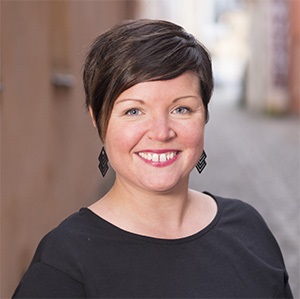Protection Fund for the Archipelago Sea finances concrete water protection actions

Kirsi Ahlman,
Deputy Director,
Centrum Balticum Foundation,
Finland
The Archipelago Sea located in Southwest Finland consists of thousands of islands and is a unique place in many ways. No wonder that the Archipelago is one of the most popular places to spend summers, both inland and on the sea. It is also a place many people call their home. But unfortunately not all news is good: the shallow Archipelago Sea has become one of the most polluted part of the Baltic Sea, and is the last HELCOM Hotspot in Finland.
The current state of the Archipelago Sea is a sum of many factors. The biggest threat for the Archipelago Sea is eutrophication. In addition, hazardous substances and human activity threat the Sea.
Protection Fund for the Archipelago Sea
Despite the current challenges, change is possible. In Centrum Balticum Foundation, we envision a Sea that is healthy and an Archipelago that is a good place to live, work and relax.
In 2007 words were put into action: Protection Fund for the Archipelago Sea was founded under Centrum Balticum Foundation. The target area of the Fund is the Finnish Archipelago and its catchment area.
The Fund aims at reducing nutrient burden running into the Sea, raising awareness and promoting civil activity. To reach the goals, it finances concrete water protection projects with donations received from individuals, companies and associations.
Through diverse partnerships ranging from local music festivals to boat expos the Fund reaches out to a vast audience and calls for action to save the sea.
The Fund has also cooperated with a Finnish artist Stefan Lindfors who created a sculpture Symbiosis that is located by the river bank in Turku, Finland. The sculpture is covered with donated nameplates by individuals and companies who want to support the protection of the sea.
The Fund is proud to have support to its work even from presidential level. The President of Finland Sauli Niinistö and the spouse of the president Jenni Haukio were the first to accept the nomination “Conservationist of the Archipelago Sea”. The Conservationists are advocates for the Sea, and commit to improve its well-being in their own actions and to raise awareness of the matter.
Concrete actions to help the Archipelago Sea
Concrete water conservation projects are in core of the Protection Fund. Through the project funding, the Fund supports diverse actors in the region and offers an important platform for citizens to realise their own ideas to improve the state of the Sea. For many of those working in the projects, the actions even have a very personal impact: the work is carried out in areas where project implementers live and spend their free time.
The projects focus mainly on reducing the nutrient load to the Archipelago Sea and raising awareness on water protection. The Fund can also award grants for thesis that align with the Fund’s principles.
To reduce nutrient load, we need innovative solutions that deal with, for example, agriculture, waste water management and sailing. The Protection Fund has addressed this by funding activities that include building of buffer zones, placing septic tanks in harbours, boat bottom scrubbing and developing waste management.
We also believe that education is the basis of sustainable solutions. For this reason, the Protection Fund grants funding for awareness raising, environmental education and civil society involvement in. As a result, the projects have produced informational material, monitored the water quality, shared best practices in local communities and piloted new ways of working.
It used to be possible to see deep down below the surface in the Archipelago Sea, but not anymore. However, with committed actions, we can help the Sea to slowly heal. Our mission is that our grandchildren have a clearer future ahead – they will see to the bottom again.
Expert article 2903
> Back to Baltic Rim Economies 1/2021
To receive the Baltic Rim Economies review free of charge, you may register to the mailing list.
The review is published 4-6 times a year.
